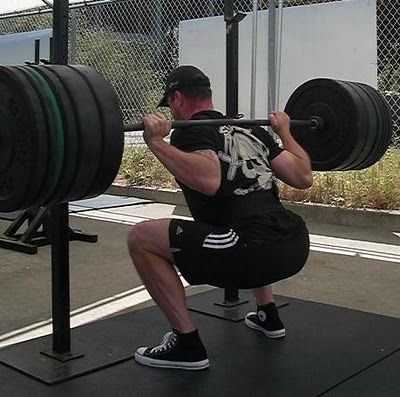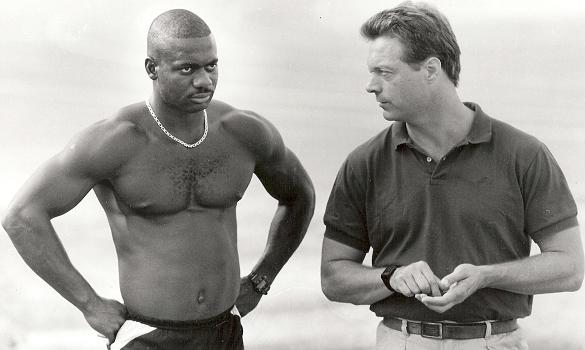"Sort of Maxes": The Key to Dominating Competition and Longevity in Training
Just last week I posted a video of SAPT client, Lisa, nailing a 240lb deadlift on her "Test Day." Within a mere twenty-four hours of posting the video on my YouTube channel, someone commented the following: "good bar speed. i know your not powerlifiting but theres a few more pounds on the table so to speak. great strength and keep up the good work."
For those of you who haven't seen the video and don't know what he is talking about, here is the deadlift below:
As you can see, the YouTube commentator is exactly right! There are a few more pounds on the table. In fact, I'm willing to bet that Lisa could have pulled 260-265lbs (and perhaps a bit more) had she decided to "grind out" another max attempt. The 240lbs she pulled in the video was certainly not her true max, even though this was a freaking TESTING DAY for her.
And that is precisely the point.
I heard some advice from Dan John that couldn't have put into words a better description for what we do with our athletes and clients on a daily basis at SAPT, in order to facilitate continued strength and power development and reduce their risk of injury. In fact, it is something that everyone should do if they desire any hope of continuing to set PRs in the weight room and dominate the playing field:
"Go for a PR, single or rep, when you are feeling exceptionally strong, but stop short of an all-out max. Set a "sort of max."
This is the type of max you need to drive up. The "sort of max." Not your actual max. This is the key to safeguarding your body to remain fresh, injury free, and efficiently managing its stressors to continue to do what most of you reading are after: moving onward and upward, both in the gym and on the playing field.
 And yet, this is something that many seem to miss once we get all riled up in the weight room.
And yet, this is something that many seem to miss once we get all riled up in the weight room.
It's as if we lose all sense and wisdom once we get under that bar, in an effort to satisfy our ego more than the health of our spine.
In fact, this relates closely to what I personally believe sets the wise apart from the fool in this world: The degree of one's capacity to defer immediate satisfaction for the sake of a greater future reward.
This applies to all spheres of life, but, keeping within the context of strength training, the immediate satisfaction would be an extra 5-15lbs on a squat, bench, deadlift, or snatch attempt (the consequence often being stalling your progress, burning out, becoming injured, or feeling exhausted on game day). The greater future reward (in resisting urge the throw more weight on the bar) would be a healthy body, high performance levels, and continued PRs in the weight room.
It is telling that the great sprint coach, Charlie Francis, said the following as he was preparing Olympic sprinter Ben Johnson:
If there is any degradation in training, stop. If there is any doubt about one more rep or run, don't do it. If you are trying to learn with reps, you won't get it later if you haven't already. Leave it and come back to it.
 This is ESPECIALLY true when it comes to training athletes. It makes me sick to my stomach when I (frequently) hear of high school and college strength and conditioning coaches pushing the limits of their kids during each and every training session! It continues to blow my mind how many coaches don't have the most basic understanding of physiology and demands of the sport at hand in order to coach their athletes properly.
This is ESPECIALLY true when it comes to training athletes. It makes me sick to my stomach when I (frequently) hear of high school and college strength and conditioning coaches pushing the limits of their kids during each and every training session! It continues to blow my mind how many coaches don't have the most basic understanding of physiology and demands of the sport at hand in order to coach their athletes properly.
I conclude with two of Rif's famous corollaries:
- The next step off a peak is always down.
- One should step down rather than fall off.
Continue to push up your "sort of max" in the weight room. It's the best way to ensure continued growth and longevity in training. You'll thank me (and Dan John) later.
